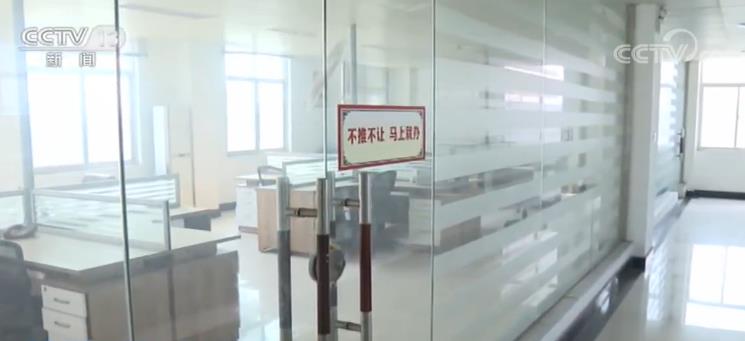

China Women’s Daily China Female Network reporter Fu Dongyan
It’s the beginning of the school season again. How will the freshmen of the millennial generation feel when they see the "Love Class" listed on the schedule? Is it longing or avoiding? Is it dismissive or full of expectations?
It is understood that at present, many colleges and universities have opened open classes or elective courses related to love. Some courses are crowded, while others have quietly disappeared. Relevant experts said that it is necessary to offer love courses for college students, but it is not so simple to teach students to "fall in love".
Popular love course in colleges and universities
The elective course "Psychology of Love" offered by the School of Public Administration of China University of Mining and Technology has been popular since it was offered. According to reports, on the online open course platform of the school, the number of hits of this elective course exceeded 1.2 million times, and the number of online elective courses exceeded 10,000.
As early as 2013, East China Normal University put "Love" into the classroom and opened an elective course called "Marriage and Love". The course was set for 84 students, and the actual registration was close to 500.
In September 2015, Zhengzhou Normal University opened an elective course of "Love Psychology", which was full once it was opened;
In March 2016, the love course named "Theory and Practice of Love Studies" of Tianjin University was officially opened, and the starting unit was the Youth League Committee, which accounted for two credits;
Nanjing University’s "Campus Love Open Class" consists of five lectures, including a love questionnaire survey and famous people commenting on love stories. In the love elective course of Southwest University of Political Science and Law, the teacher will teach some tricks of confession and chatting up, and writing love letters becomes one of the homework after class; Fudan University gave a wonderful lecture on "About Love" when teaching "Ideological and Moral Cultivation and Basic Law". After the video was released on the Internet, its popularity quickly exploded … …
In recent years, there are not a few colleges and universities offering love courses, which involve psychology, love skills, love economics, marriage and family.
"In fact, the content about love psychology is a part of the compulsory course of college students’ health education, but the general class hours are less." Xia Cuicui, an associate professor at the Student Psychological Counseling and Service Center of Beijing Normal University, said.
Beijing Normal University, which is good at psychology, has a long history of love course. As early as 2007, Xia Cuicui opened a course "Intimacy and Self-growth", in which love content is an important part. Later, due to work arrangements, this course ended, but Xia Cuicui will hold some group activities or lectures in this field from time to time.
Xia Cuicui said that love classes are generally offered in colleges and universities, which shows that colleges and universities are paying more and more attention to the psychological growth of college students, which is the embodiment that the state attaches importance to people’s mental health and people’s pursuit of a better life.
A necessary and beneficial course.
However, the reporter noticed that the related reports about setting up love classes in colleges and universities in Weibo attracted many netizens’ messages, with mixed opinions.
The supporters are in the mainstream:
@ Lu Kemin: It is just necessary for college students to establish a correct concept of love.
@ Dashan Community: There is a kind of people whose love concept is really incorrect. Schools should not only teach textbook knowledge, but also have correct guidance on emotional concepts, which can effectively reduce the crime rate and suicide cases.
@ Almost Far Away: It is very necessary to guide students to form a correct concept of love and marriage. Hiding it will only cause a lot of pain in the future.
@ 丫丫丫丫: Our country’s knowledge about love is generally learned from peers, and many of the knowledge of peers is inaccurate. Therefore, this course should have been opened long ago, but we must pay attention to the methods and not become chicken ribs.
There are also a few who oppose it:
@ Psychologist Mr Tang: The concept of love begins with values. It is better to read more books and learn more about the world.
@ 京京京京: Textbook-style love is definitely not practical. If everyone falls in love according to the textbook, then there is no need to fall in love. If you think the conditions are right, just get married.
@ @CHENJIANXING: Love varies from person to person and cannot be generalized.
@ @Twink: They are rich in theoretical knowledge, but they are likely to die in the cradle of love.
There are also some skeptics:
@ @MIN-Wolves: Will this work?
… …
"It is necessary and beneficial to offer courses related to love and marriage." Ke Qianting, an associate professor in the Chinese Department of Sun Yat-sen University and an expert in gender culture research, affirmed. She further explained that in the process of love and communication, there are often many conflicts, and college students are generally inexperienced in dealing with such conflicts, which can be resolved by understanding knowledge. For example, some people have the desire to control others and think that they love others, so they must control, harass and track them; For example, the more common breakup violence, etc., is theoretical, knowledgeable and methodological in these aspects.
"Now, the whole sociology pays great attention to people’s emotional research. Therefore, I think this course is very necessary, and I can tell students with theoretical knowledge how to understand the signals sent by the other party in communication. How to resolve misunderstandings and contradictions? How to respect others? Wait. " Ke Qianting said.
At the same time, she also stressed that teaching love knowledge is not to make you a master of love, but to let you know more about love, emotion and communication, and to be able to deal with specific problems in the future.
In this regard, Xia Cuicui’s point of view is that love-related courses may not be needed by everyone, but they can meet the needs of some people. "There are more girls in our normal university, so from the situation of consulting me at ordinary times, there are still quite a few students who need this part." For example, she said, for example, some students who are lovelorn can’t go out, some don’t know how to solve the love conflict, and some fail in love because of personal personality problems. "Such students need to solve their own problems through some learning."
Xia Cuicui said that the love course actually uses psychological methods to deepen self-understanding, explore self-growth experience and sort out the correct concept of love and marriage, so as to help college students better promote their love relationship and prepare for their future marriage and family life. "Correct education and guidance on love and marriage can cultivate a person’s ability to build a happy family and let more people live with quality."
In the interview, experts have affirmed the benefits of love courses for future marriage.
"During my college years, learning some theoretical knowledge will definitely help my family life in the future." Ke Qianting said that college students have the ability to analyze and reflect. Comparing theoretical knowledge with parents’ marriage in reality and romantic love seen on TV will guide their future love and marriage.
Put forward a big challenge to the teaching teacher
It is reported that the "Psychology of Love" in China University of Mining and Technology was taught by Professor Duan Xinxing, dean of the School of Public Administration and doctoral supervisor. She led a team of more than 10 professional teachers to jointly develop the course content. In order to get into the inner world of college students, Duan Xinxing spent a lot of time catching up with "young people’s things". Whenever she had time, she would chase plays at home, and she would never fall behind the popular online celebrity plays, online celebrity movies and variety shows.
"It is necessary to really talk about love." Xia Cuicui affirmed Professor Duan Xinxing’s dedication to the course: "Because there is no prescribed teaching material and syllabus for the love course, it is a test of the ability and dedication of the professor. How to better combine theory with practice? This poses a great challenge to the teacher. "
How should we teach the course of love? Xia Cuicui, who has many years’ teaching and consulting experience, believes that psychology courses are different from traditional courses. Teachers should not directly talk about what you should do, but should help them guide and summarize through the interaction between teachers and students, and convey some correct concepts and ideas. "And students’ gains vary from person to person and from class to class, but students will definitely gain something from courses that are really close to students’ needs."
Ke Qianting also said that at present, the research in this field in China is still superficial, and it takes time and energy to explore continuously.
Therefore, she suggested that teachers who teach this course should, first, take the needs of students as the leading factor, and teachers should understand what the current generation of young students think and need, and like Professor Duan Xinxing, meet the unique needs of students on the basis of investigation; Second, this is a very practical course, so we should not simply instill it, but let students participate in discussion and communication more. Third, this course should not only talk about some knowledge and methods of communication, but also convey a correct concept, the basis of which is to respect life. "This is the basic values and framework of this course. Only by truly understanding respect can we know how to love each other, which is the key to love and marriage. "




















